We've heard enough already about what is the worst pain in the neck and back can occur due to the errors of a herniated disc, and if there is severe pain, go to the doctor, in anticipation of the terrible sentence. However, myths about the inevitable pain when a hernia is exaggerated: a hernia is often not a cause for pain in the back and neck, although many older people in the picture, which is set at the same time, some 3-4 mm herniation. And how, then there is severe pain in the back and neck, also in young people?
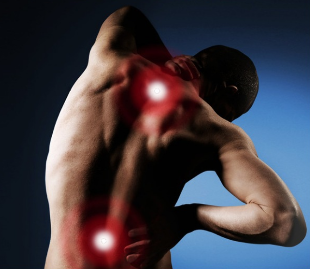
Causes of pain in the neck and back
Pain in the back and neck most commonly occur due to cramps in the muscles and joint subluxations of the vertebrae. Unfortunately, the diagnosis of muscles and joints is made well enough. The smallest hernias and protrusion of the immediately identified with the help of CT and MRI, while subluxations and misalignment of the vertebrae often remain unnoticed. Electromyography , which allows to identify explicitly the different muscle tone, often not running at all.
How and why you may experience abnormal muscle spasms or subluxation of the vertebrae? Perhaps they are only possible in weightlifting or only after injury or damage to the spine?
The fact is that it can happen to absolutely anyone, and almost imperceptibly.
Muscle spasms may increase throughout life and in themselves lead to changes in the spine and sprains
Cramps in the muscles of the back and neck
Start the cramps in the muscles can be quite humdrum things:
- Constant uncomfortable tense body posture in the seated position
- The second reason is the sudden movement and the disproportionate physical activity (applies especially for fans of independent repair and zealous gardeners): muscle spasm of the thoracolumbar division of the back can occur due to carrying heavy loads for extended before the arms; the pain and muscle tension in the lumbar-sacral region, resulting from attempts to raise the heavy tilt position
- The third reason is muscle inflammation (myositis), due to elemental exposure. Probably all know that is a shot in the neck or back, which are the result of disastrous drafts. Oddly enough, that happens more in the summer than in the winter season. The reason for this is wrong is the air conditioning running, all displayed the same wrong temperature (too large a difference between external and preset temperature)
Symptoms of pain in the neck and back
- Cervical myositis (sometimes called cervical radiculitis) causes pain in the back, which come on the one hand, and on the top of the head, through the ear to the shoulder and arm
- Backache in the thoracic region of the back radiates to ribs in the form of intercostal neuralgia. Data in the left part of the chest, which leads to the simulation of a heart attack
- Lumbar backache (lumbago) are given in the thigh. It's the same with inflammation of the sciatic nerve causes a sharp pain attack of "sciatica" in which the pain extends from the gluteal muscles and down the entire back, thighs and the lower part of the leg literally on the soles of the feet
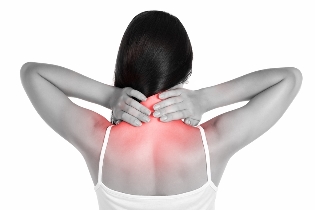
The mechanism of pain in the muscles
Why pain syndrome arising in the muscles, often considered difficult, despite the fact that the first attack may pass by itself? Why muscles hurt?
The pain is so insidious phenomenon that resembles a beast that has awakened. While Napping, that's fine. But it is worth it to Wake up, you will have problems.
If the resulting muscle spasm in the back and neck, which passes through affects the muscles, nerves, allowing the reflex mechanism of pain reminiscent of the hell of boomerang:
- Pinched nerve multiplies muscle spasm (this is their natural protective pain response)
- Repeated spasm of the muscle irritates the nerve again and everything is going in an endless circle
The pain could not subside due to constant reflex irritation.
The treatment of muscle pain in the back and neck
Contributes to the development of chronic pain syndrome and inappropriate treatment:
- Heat compresses on the painful area, hot tub, rubbing at first glance, it seems to lead to pain, then the swelling of the muscles of the back and neck, even more important and acute pain
- Conduct therapeutic exercises and also stretching exercises during the acute can also cause deterioration, because the reaction already tense muscles under the influence of the additional load can be unpredictable. In some cases, you can relax, while others become even more intense
- Similar reactions can occur during the massage
Pulled muscles are very firm to the touch, and the man himself is very hard to bend-stretch, rotate neck, elevate and he took in hand.
Treatment of muscle spasms and acute pain should be aimed at more rapid elimination of pain syndrome
This is assigned to a week of bed rest and it is held:
- Five to seven-day course of pain relief non-steroidal medications
- With extensive painful region made novocaine or Lidocainum blockade
- Sessions after isometric relaxation is a very effective static exercises for pain relief
- Manual for treatment and acupuncture, provided that they perform qualified experts
- Myofascial massage with the stimulation of the trigger (pain) points
Trigger points and area of pain are not always the same:
- Pain in the lower back, and the muscle is attached much lower, and not back and front
The shift of the joints, the vertebrae of the back and neck
Displacement (subluxation) of the joints, the vertebrae, a not uncommon occurrence. This can cause:
- Spine injury, and even ordinary household: a fall, a blow, a bad fall at the feet of, etc ..
- The steep slope, turn neck and torso with a lot of too much angle
- Constant muscle spasm, compressing the vertebral
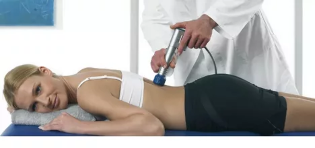
The diagnosis of displacement of the joints
If subluxation occurs after a fall or bad dynamics, to diagnose can be sudden and long-term past the pain. During the displacement, you can hear a crunching or clicking on the
- The surprise factor of pain, the syndrome should alert the physician, as in degenerative disc disease or hernia pain is chronic and was present already several years
- If subluxation is the result of the muscles, the diagnosis is more difficult, as a move develops slowly and results in gradual increase in pain and immobility
Offset joints can not give a vivid clinical picture, except in the cases when it occurs in transitional areas:
- Cervical-thoracic
- Thoracolumbar
- Lumbosacral
Each Section has its own characteristic additional features of the shift of the vertebrae:
In the cervix:
- Sick and dizzy on the floor, fainting
- Darkening, flies before the eyes, noises in the ears
- The curvature of the neck
- Weakness in the arm, burning sensation and numbness of the fingers (syndrome cervico-brachial plexus)
In the chest:
- Stabbing pain between the shoulder blades, radiate to the chest and abdomen
These symptoms — a common cause for hospitalization of patients with suspected myocardial infarction, ulcers and even appendicitis.
If you want to determine that the chest pain not due to heart, is easy enough: After taking of validol or nitroglycerin pain attack is not
In the lumbar:
- Acute pain in the low back, radiate to the thigh, the lower part of the abdomen and backThat occurs when a subluxation within the vertebra in the upper part of the lower back with a pinched femoral nerve
- Winds along the entire rear surface of the foot starting from the buttocks
- Numbness, the sensation of cramps in the legs or are taken awaySuch phenomena say about a pinch of the sciatic nerve with the vertebral subluxation in the lower lumbar back
The treatment of subluxations of the joints
The optimal treatment of dislocation of a vertebra is its reduction, which is carried out with the help of osteopathy and manual therapy. Rooting will not stop until until the bobbin into place in its original location
Unfortunately, the really sensible osteopaths and chiropractors, are able to implement the appropriate place in the vertebra is very small.
- For the start of the treatment you will also need a mandatory relieve pain non-steroidal anti-inflammatory drugs
- Then it is desirable to provide competent manual therapy session
- But manual therapy is not self-sufficient method of treatment, and in order to maintain its effect, the necessary measures for the strengthening of the diseased area of the spine. This can be achieved, while strengthening the muscles and restore your balance with:
- Strengthening physical therapy
- Massage
- Electro-myostimulation
Cervical and lumbar osteochondrosis
Over time, chronic cervical myositis leads to osteochondrosis, and he, unlike a hernia, a very common cause for pain in the neck and is rather common among very young people.
- Symptoms of cervical degenerative disc diseases include vascular disease, when the pain in the neck and a below — shoulder region, the arms are added indications of cerebrovascular disease
- The same pain and muscle spasms in the thoracic region — in the form of burning, in the form of of chronic pain pain that is interspersed with a feeling as if the legs were always. Walking becomes uncertain: a man is literally walking on a curved
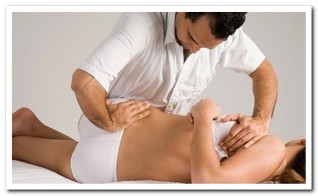
If in cervical osteochondrosis patients usually go to the doctor with a complaint of that headache, when lumbar the alleged cause is already much lower, and the complaining has already started the "paraplegic".
Muscle spasm in the lumbar region leading to a spasm and narrowing of the blood vessels, interfering with blood flow in all organs located below the problem area, including the legs. Therefore, it is the feeling of numbness in the extremities
If pain in the back and neck, despite treatment, was not completed in a few weeks, there is reason to suspect a more serious disease: movement of the joints of the spine or a herniated disc.
Pain when intervertebral hernia
Finally went to a herniated source of the most intense pain in the cervical and lumbar, and neck, and even the most dangerous phenomenon, because of the exceptional role of the neck as the main "pipeline" for the vertebral artery.
Pain in the hernia, and also the most painful and long-lasting, as it is due to a pinched spinal nerve. However, this disease never occurs in a vacuum and is always secondary
As a rule of pathology is to write:
- Long dystrophic processes in the spine, e.g. osteochondrosis
- Disturbances in muscle function (the same pain and spasms in specific muscle groups)
- Injury and other diseases
With this expression "I unexpectedly formed a hernia" is wrong, although the output of the victim is often a complete surprise. But here we need the convergence of several external factors:
- Hard work in an awkward position
- The sudden movement back
- Falls on the feet or the coccyx, etc
The herniation does not always cause pain:
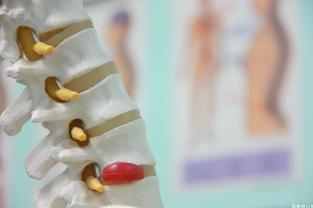
- The front hernia is directed to the opposite side of the spinal cord and never touch the nerve
- Schmorl hernia, which so love to scare the doctors, often completely asymptomatic, as is the vertical offset of hyaline cartilage or the intervertebral disc in the vertebral body. It is also impossible to contact with the nerve
Hazard is the only hernia back
If it hurts in the neck and back, a thorough diagnosis.
Very often, when a person treat a hernia, and the picture really is, but that is the cause of the pain can not, because it is not the main reason: the compression of the nerve. The location of the hernia eliminates this option
But a person who has back pain and is still persistently treated "a hernia" and also work. And causes pain really can subluxation and locking of the vertebrae or a muscle spasm.





































